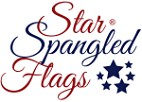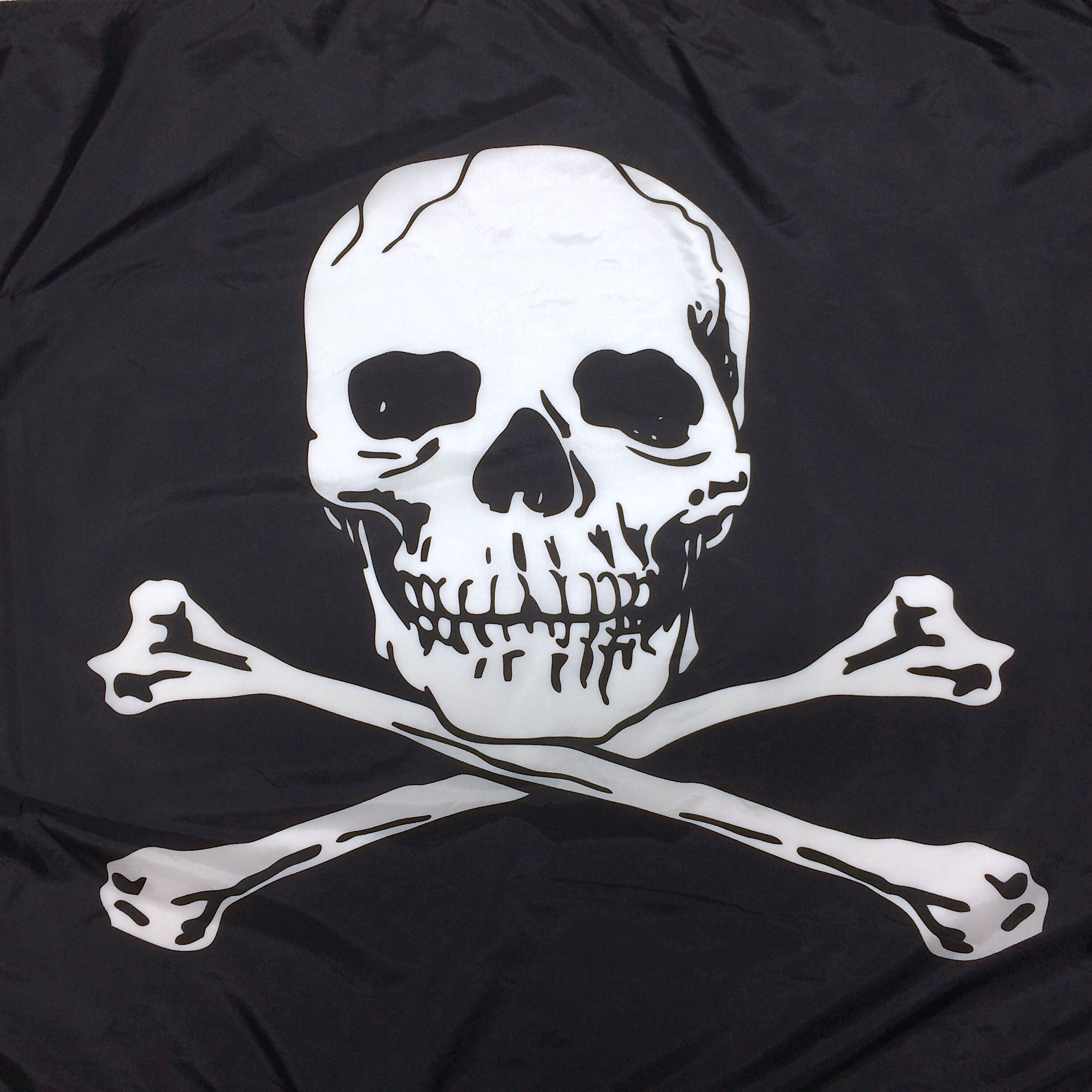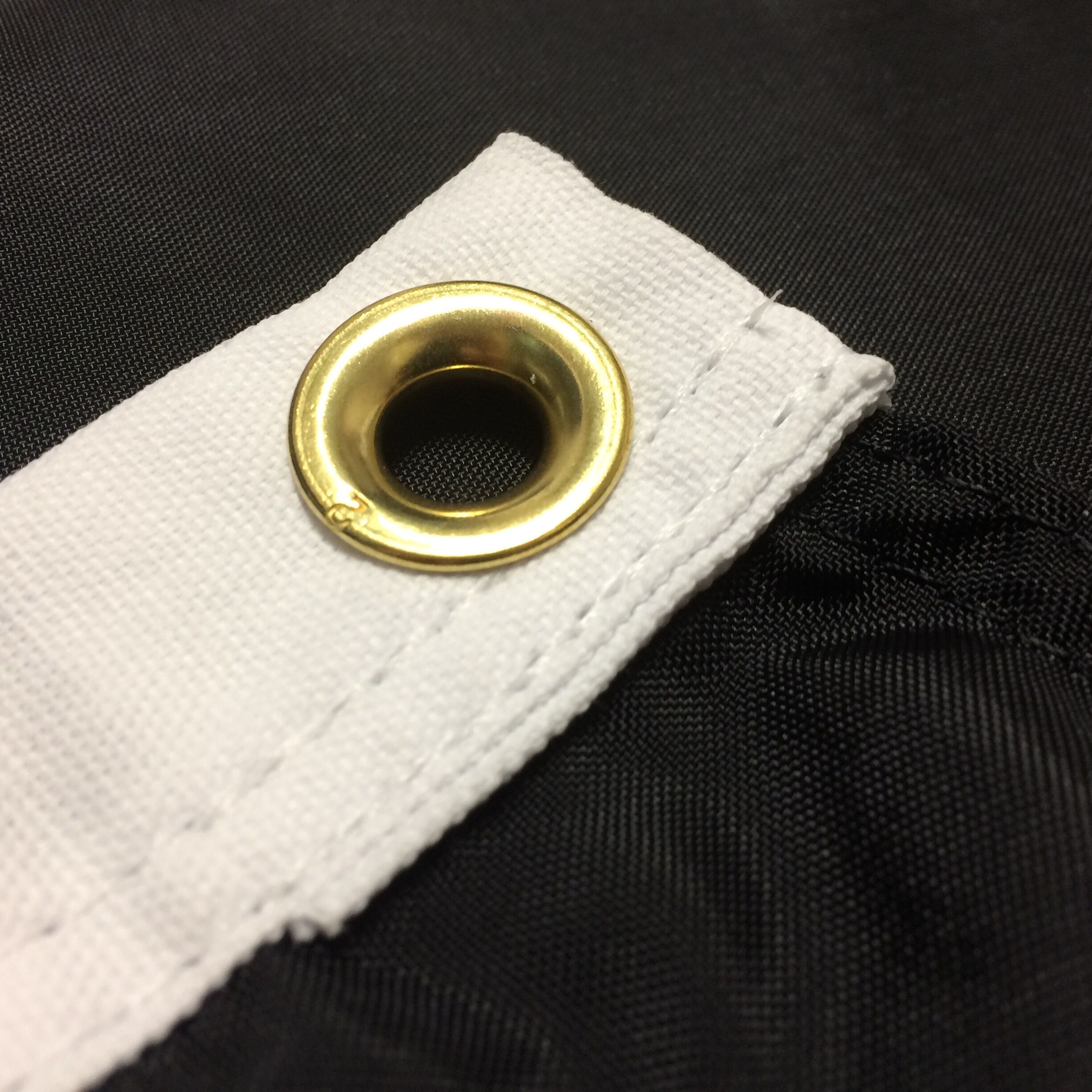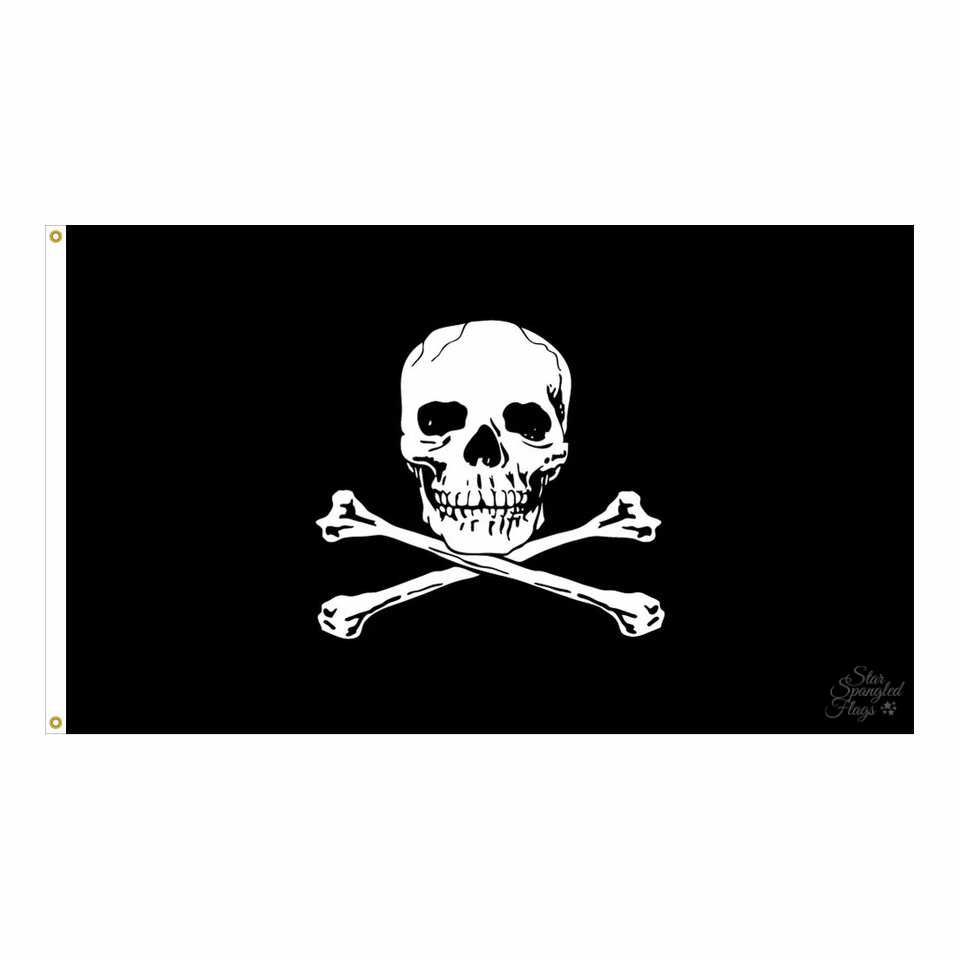Pirate flag description
Our 3×5 ft nylon Jolly Roger pirate flags are fully sewn using 210 denier nylon together that is scientifically treated to resist UV fading, with a bright white canvas header, 2 strong brass grommets, and 4 rows of stitching on the fly end so it lasts long without fraying.
Buy your own flag today!
Jolly Roger flag history
Used to identify a pirate ship in the early 18th century, the Jolly Roger flag is the traditional English name for such flags. The skull and crossbones was used by a number of pirate captains such as “Black Sam” Bellamy, Edward Low and Edward England. The earliest depiction of the Jolly Roger was said to have been used by the infamous Blackbeard himself, as recorded by many authors including Captain John Cranby of HMS Poole.
These flags weren’t flown all the time as pirate ships would have a different “false flag” and use that normally. They would only fly the Jolly Roger once they were about to attack and within firing range of target merchant ships, often together with a warning shot.
When Did the Jolly Roger Flag Originally Appear?
Like with other historical flans, the origins of the Jolly Roger flag are shrouded in mystery. It’s unknown who designed the Jolly Roger or when it originally appeared. With that said, some of the first documented reports of the Jolly Roger flag can be traced back to the early 1700s.
In 1724, British author Charles Johnson published a book on pirates. Titled “A General History of the Pyrates,” it specifically mentioned two pirates who flew the Jolly Roger. One of these pirates was Bartholomew Roberts. The other pirate was Francis Spriggs.
Both Roberts and Spriggs referred to their flag as “Jolly Roger.” However, they didn’t use the same design. There were nuances in their respective flags’ designs. And neither of them used the same design as the modern day Jolly Roger flag.
Origins of the Skull and Crossbones Design
The modern day Jolly Roger flag, of course, features a skull and crossbones. It’s believed that naval flags have featured a skull and crossbones ever since the 16th century. However, it wasn’t until the Golden Age of Piracy when the modern day Jolly Roger flag emerged
The Golden Age of Piracy is a period of piracy from the 1650s to the 1730s. During the Golden Age of Piracy, pirates began to display the Jolly Roger flag as a signal to other pirates and potentially as a warning to merchants.
It’s unknown who designed the modern day Jolly Roger flag, but some historians credit Samuel Bellamy with its design. Bellamy was an English pirate. He was regarded as one of the richest pirates in the world. Bellamy displayed the Jolly Roger flag, and as other pirates discovered it, they too began displaying the Jolly Roger flag.
In Conclusion
If you search for images of pirates online, you’ll probably come across the Jolly Roger flag. It features a white skull and crossbones against a black background. The Jolly Roger flag emerged during the Golden Age of Piracy. Since then, it’s been commonly associated with pirates.
#1) Dates Back to the 17th Century
The Jolly Roger flag has origins dating back to at least the 17th century. Around this time, pirate ships were seen displaying the now-icon flag. Some of the famous pirate captains who displayed the Jolly Roger flag include Black Sam Bellamy, Francis Spriggs, Bartholomew Roberts, John Taylor and Edward England. They brought attention to the Jolly Roger flag, thus making it more popular.
#2) Meant to Deter
There’s a reason why the Jolly Roger flag looks so menacing: It was meant to deter against attacks. Pirate ships were often attacked, either by government navies or by other pirates. To prevent their ships from being attacked, pirate captains would display the Jolly Roger flag. With its skull and crossbones, it was a form of intimidation. Displaying the Jolly Roger flag struck fear into the hearts and minds of pirates’ enemies while deterring potential attacks.
#3) Warning to Surrender
Historians believe that the Jolly Roger flag’s black background was a warning to surrender. Before the Jolly Roger flag was invented and displayed on pirate ships, captains would often display either white or black flags. A black flag was displayed as a warning for another ship to surrender. A white flag was displayed as a sign of agreeing to surrender.
#4) Not Displayed At All Times
Contrary to popular belief, pirate ships didn’t display the Jolly Roger flag at all times. As thieves of the sea, pirates didn’t want to scare away their victims. Therefore, they would keep the Jolly Roger down when venturing near merchant ships. When they were close enough to attack, pirate ships would then raise the Jolly Roger flag.
#5) Multiple Versions
While they all feature a white skull and crossbones on a black background, the Jolly Roger flag is available in many different versions. Over the course of several centuries, pirates have designed dozens of Jolly Roger flags. Some of them feature the skull above the crossbones, whereas others feature the skill over the crossbones. There are also versions of the Jolly Roger flag that feature a sword.
Where to Buy a Pirate Flag
If you’re interested in flying your own pirate flag, you can buy a quality one that will last a long time from the Historical flags website section of StarSpangledFlags.com
- Where did the Jolly Roger name come from?
- What is the meaning of, and who flew the skull and crossbones on the Pirate flag?
- When was the skull and crossbones first used?
- Did pirates actually fly the Jolly Roger flag?
- Is it illegal to fly Pirate flags now?
Where did the Jolly Roger name come from?
Sometimes the name has claimed to come from the term “Joli Rouge” (“Pretty Red”) in reference to a red flag used by French privateers. This could be used as a symbol for red blood, violent pirates, ready to kill.
By the 19th century the skull and cross bones black flag became a cliché in pirate fiction and the “Golden Age of Piracy” was over. The skull and crossbones flag is often used in film and other media to depict all types of pirates.
What is the meaning of, and who flew the skull and crossbones on the Pirate flag?
The flag most commonly identified as the Jolly Roger today, the skull and crossbones symbol on a black flag, was flown by some pirates during the 1710s when they were about to attack. It was used by a number of pirate captains, including: “Black Sam Bellamy” – an English pirate who operated in the early 18th century, is best known as the wealthiest pirate in recorded history and one of the faces of the Golden Age of Piracy; “Edward England” – an Irish born pirate who sailed on the Pearl and later the Fancy, for which England exchanged the Pearl in 1720; and “John Taylor” – born in England and was active in the Indian Ocean and best known for participating in two of the richest pirate captures of all time. The Jolly Roger went on to become the most commonly used pirate flag during the 1720s, although other designs were also in use.
When was the skull and crossbones first used?
The skull and crossbones was used from at least the 12th century. It has been used for military flags or insignia and as a warning of the ferocity of the unit displaying it. It became associated with piracy from the 14th century onwards, possibly even earlier. By the 15th century, the symbol had developed into its familiar form.
Did pirates actually fly the Jolly Roger flag?
Yes, pirates did actually fly the “Jolly Roger” or “Pirate” flag! They did not, however, fly the Jolly Roger Pirate flag at all times. Like other vessels, pirate ships usually stocked a variety of flags, and would normally fly a false flag, or no colors, until they had their prey within firing range. When they were within firing range, they would hoist their Pirate flag to signal they were about to attack.
Is it illegal to fly Pirate flags now?
It is not illegal to fly Pirate flags within the United States. There are no federal laws that prohibit the flying of Pirate flags, but flying one could be trickier than that. Flying the Pirate flag on U.S. land or on your boat is one thing but flying one on your boat outside of U.S. Territorial waters could result in a search of your boat.



